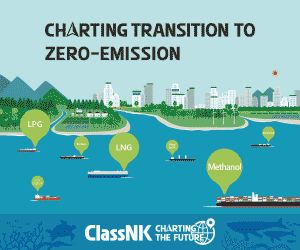Peter Sand, Chief Analyst at Xeneta, notes that geopolitical tensions are once again posing a threat to the safety and stability of global supply chains.
Peter Sand expressed hope for a de-escalation in the conflict between Israel and Iran, as there are concerns it can lead to the de-facto closure of the Strait of Hormuz, a crucial entry point for container ships serving ports like Jebel Ali and the broader Arabian Gulf region.
He explained that any closure of the Strait of Hormuz would result in services being re-routed, with increased dependence on ports along India’s West Coast to maintain connections between the Far East and the Indian subcontinent. Such a scenario, he said, would inevitably lead to disruption, port congestion, and potentially higher oil prices. These factors would likely cause a spike in ocean freight container shipping rates, with carriers also expected to introduce a ‘security surcharge’ on affected trade routes in the near future.
Sand added that the escalation further diminishes the likelihood of container ships returning in large numbers to the Red Sea. This situation, he pointed out, continues to significantly affect ocean container shipping rates, even 18 months after Iran-backed Houthi militia in Yemen began targeting vessels in the area.
Average spot rates from Far East to North Europe are up 62% since 1 December 2023, just before escalation in the Red Sea, while average spot rates to US East Coast – another trade that would ordinarily transit the Suez Canal – are up 165%
… said Sand.
Global ocean container shipping data highlights
Market average spot rates – 12 June 2025:
- Far East to US West Coast: USD 5345 per FEU (40ft container)
- Far East to US East Coast: USD 6568 per FEU
- Far East to North Europe: USD 2434 per FEU
- Far East to Mediterranean: USD 4065 per FEU
- North Europe to US East Coast: USD 2122 per FEU
Market mid-high spot rates – 12 June 2025:
- Far East to US West Coast: USD 6100 per FEU
- Far East to US East Coast: USD 7213 per FEU
- Far East to North Europe: USD 2712 per FEU
- Far East to Mediterranean: USD 4800 per FEU
- North Europe to US East Coast: USD 2386 per FEU
Note: The Xeneta mid-high is the spot rates paid by shippers in the 75th percentile of the market. The market mid-low (referenced below) is the 25th percentile of the market.
- Market mid-low on the Transpacific trade from Far East to US West Coast has increased 41% since 1 June to USD 5100 per FEU.
- The spread between the market mid-low and mid-high at the end of May was USD 250 before increasing to USD 2506 on 1 June, driven by increase in mid-high. The spread has now narrowed to USD 1000 on 12 June, driven by increase in mid-low (see chart below)

- Flatter market mid-high and narrowing spread with market mid-low suggests spot rate spike following the lowering of US-China tariffs in May is now reaching a peak.
- Offered capacity on the Transpacific trade is up 28% in mid-June compared to mid-May – and continuing to trend upwards – as carriers respond to cargo rush following lowering of tariffs. Increased capacity further supports forecast of spot rates reaching a peak in June.
- Conflict in the Red Sea continues to impact ocean container freight rates with majority of ships sailing around the Cape of Good Hope. Average spot rates from Far East to North Europe are up 62% since 1 December 2023, while average spot rates to US East Coast – another trade that would ordinarily transit the Suez Canal – are up 165%.
Peter Sand observed that a narrowing of the gap between mid-high and mid-low market levels in Xeneta’s data suggested that the fear and uncertainty which had driven spot rates upward following the 90-day reduction in US-China tariffs was now beginning to ease.
He stated that Xeneta had previously predicted spot rates would peak in June before experiencing renewed downward pressure, and affirmed that this prediction was currently being realized.
Sand noted that shipping capacity on the Transpacific trade had increased by 28% since mid-May, as carriers responded to shippers expediting cargo shipments during the 90-day period of lower tariffs. He explained that this growing capacity, combined with a deceleration in the cargo rush, should result in a return of the downward pressure on spot rates that had been evident in Q1, prior to the announcement of the ‘Liberation Day’ tariff changes.

































































